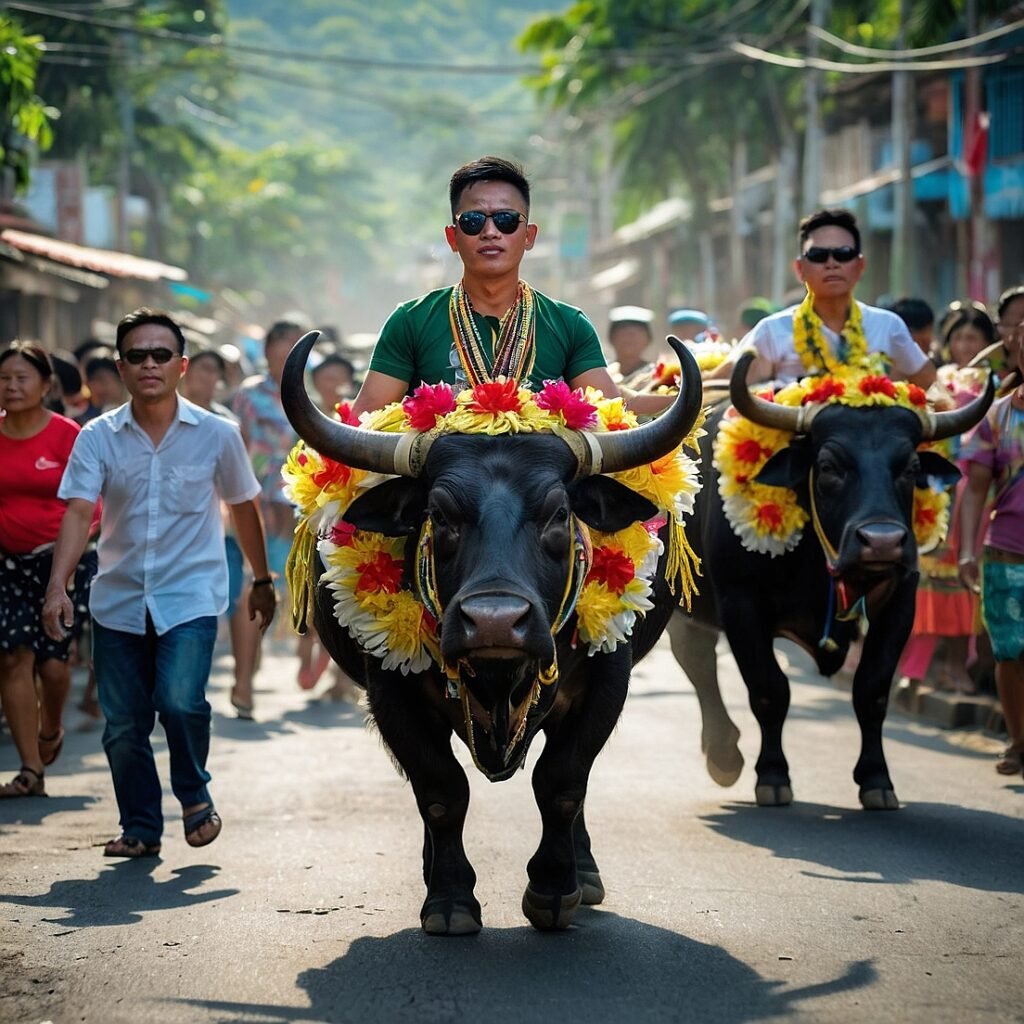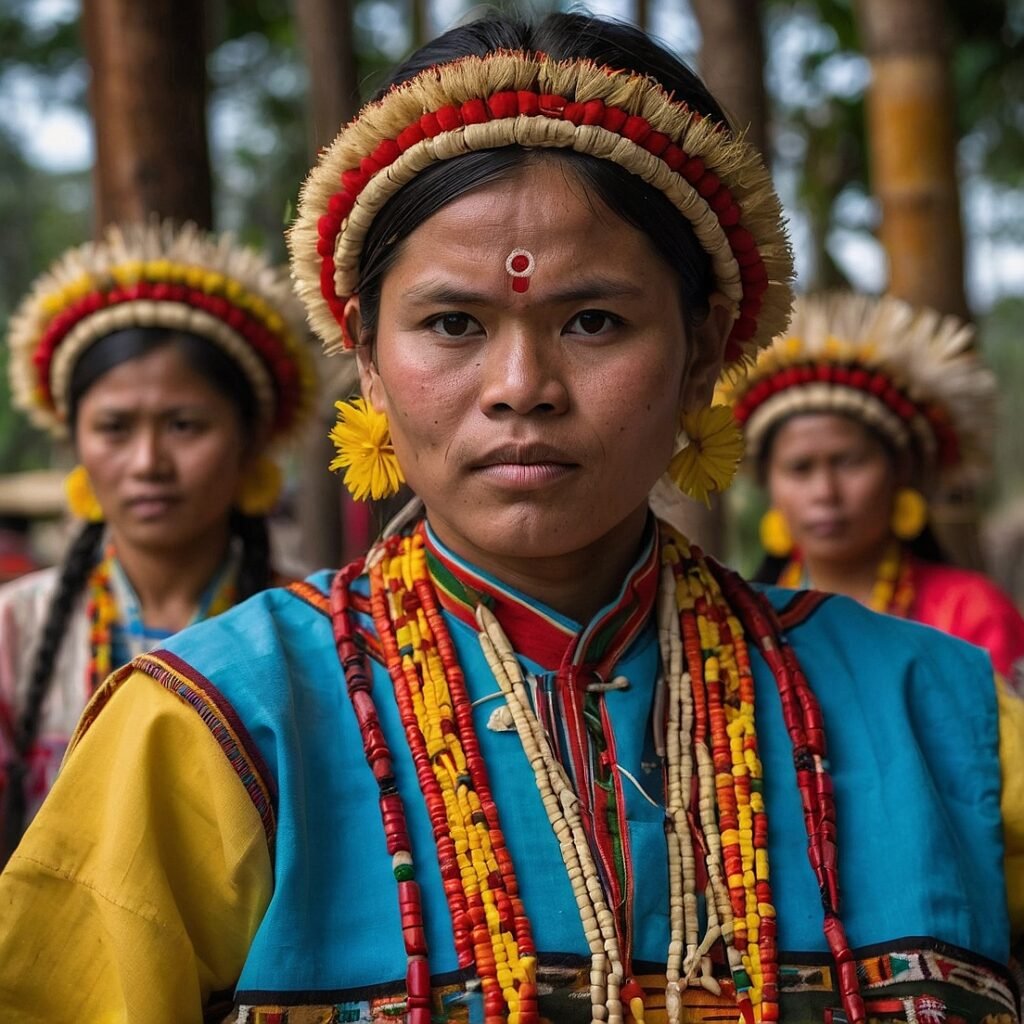Have you ever wondered what it would be like to see hundreds of carabaos kneeling in front of a church? Well, if you’re curious about this unique spectacle, you’re in for a treat! Welcome to the world of the Carabao Festival, a vibrant celebration that takes place annually in Pulilan, Bulacan, Philippines. This festival isn’t just about colorful parades and lively music; it’s a heartfelt tribute to the humble carabao, the backbone of Filipino agriculture. In this blog post, we’ll dive deep into the fascinating world of the Carabao Festival, exploring its rich history, cultural significance, and the unforgettable experiences it offers to both locals and tourists alike. So, grab a cup of coffee, sit back, and let’s embark on this exciting journey through one of the Philippines’ most unique and cherished festivals!
The Origins: A Tale of Gratitude and Devotion
The Birth of a Tradition
Picture this: it’s the early 1900s, and the farmers of Pulilan are facing a severe drought. Crops are failing, and the community is on the brink of starvation. In their desperation, they turn to San Isidro Labrador, the patron saint of farmers, for help. Legend has it that the farmers made a solemn vow: if their prayers were answered and rain came, they would show their gratitude by parading their carabaos in front of the church, adorning them with flowers, and teaching them to kneel as a sign of respect.
Lo and behold, the rains came, saving the crops and the livelihood of the entire town. True to their word, the farmers fulfilled their promise, and thus, the Carabao Festival was born. This beautiful tradition has been passed down through generations, evolving into the grand celebration we see today. It’s a testament to the deep-rooted faith and gratitude of the Filipino people, as well as their special bond with the carabao, their faithful companion in the fields.
The Star of the Show: The Mighty Carabao
More Than Just a Farm Animal
Now, you might be wondering, “Why all this fuss about a water buffalo?” Well, my friend, the carabao is no ordinary animal in Filipino culture. Often referred to as the “national animal” of the Philippines, the carabao holds a special place in the hearts of Filipinos, especially in rural areas. These gentle giants have been an integral part of Philippine agriculture for centuries, helping farmers plow fields, transport goods, and even provide milk and meat.
The carabao’s importance goes beyond its practical uses. It symbolizes the hardworking spirit of the Filipino people, their resilience in the face of adversity, and their deep connection to the land. In many ways, the story of the carabao mirrors the story of the Filipino farmer – strong, patient, and enduring. The Carabao Festival is a way for the people of Pulilan to honor this special bond and express their gratitude for the carabao’s unwavering support throughout the years.
The Festival Highlights: A Feast for the Senses
A Colorful Parade Like No Other
Imagine a sea of carabaos, adorned with vibrant flowers and gleaming decorations, parading through the streets of Pulilan. It’s a sight that will take your breath away! The Carabao Festival typically spans several days, but the main event usually takes place on May 14th and 15th, coinciding with the feast of San Isidro Labrador.
The highlight of the festival is undoubtedly the grand parade, where hundreds of carabaos and their owners march through town. But this is no ordinary parade – it’s a dazzling display of creativity and devotion. The carabaos are meticulously groomed and decorated with intricate floral arrangements, colorful paint, and sometimes even costumes. It’s like a beauty pageant for water buffaloes, and trust me, you’ve never seen anything quite like it!
The Kneeling Ritual: A Moment of Awe
As impressive as the parade is, the most captivating moment of the festival comes when the carabaos reach the church of San Isidro Labrador. Here, in a breathtaking display of training and devotion, the carabaos kneel before the church, guided by their handlers. It’s a powerful sight that never fails to move spectators, symbolizing humility, respect, and the deep connection between the people, their faith, and their animal companions.
This kneeling ritual is more than just a spectacle; it’s a physical manifestation of the gratitude that sparked the festival over a century ago. It’s a reminder of the vow made by those desperate farmers and the miracle they believed saved their town. Witnessing this moment, you can’t help but feel a sense of wonder and appreciation for the rich tapestry of Filipino culture and tradition.
Beyond the Carabaos: A Celebration of Culture
Food, Music, and Merriment
While the carabaos are undoubtedly the stars of the show, the Carabao Festival offers so much more. The streets of Pulilan come alive with the sounds of traditional music, the aroma of delicious Filipino cuisine, and the joyous laughter of locals and tourists alike. Food stalls line the streets, offering a mouthwatering array of local delicacies. From savory dishes like lechon (roasted pig) and pancit (noodles) to sweet treats like halo-halo (a popular Filipino dessert), there’s something to satisfy every palate.
The festival also features various cultural performances, showcasing traditional Filipino dances and music. You might catch a lively performance of the tinikling, the national dance of the Philippines, or be serenaded by the haunting melodies of the kubing (bamboo jaw harp). It’s a fantastic opportunity to immerse yourself in Filipino culture and experience the warmth and hospitality that the country is famous for.
The Economic Impact: Boosting Local Tourism
A Boon for Pulilan
The Carabao Festival isn’t just a cultural celebration; it’s also a significant economic event for Pulilan and the surrounding areas. Each year, the festival attracts thousands of visitors from all over the Philippines and even from abroad. This influx of tourists provides a substantial boost to the local economy, benefiting hotels, restaurants, souvenir shops, and other businesses in the area.
Let’s take a look at some numbers to understand the economic impact of the festival:
| Year | Estimated Number of Visitors | Estimated Economic Impact (in PHP) |
|---|---|---|
| 2018 | 50,000 | 15 million |
| 2019 | 60,000 | 18 million |
| 2020 | N/A (Cancelled due to COVID-19) | N/A |
| 2021 | N/A (Virtual celebration) | N/A |
As you can see, before the COVID-19 pandemic, the festival was experiencing steady growth in terms of visitor numbers and economic impact. While the pandemic forced the cancellation of the physical event in 2020 and 2021, the spirit of the festival remained strong, with organizers hosting virtual celebrations to keep the tradition alive.
The Environmental Aspect: Promoting Sustainable Agriculture
Honoring Nature’s Helpers
In recent years, the Carabao Festival has taken on an additional significance as a platform for promoting sustainable agriculture practices. As concerns about climate change and environmental degradation grow, many Filipino farmers are looking for ways to reduce their reliance on mechanized farming methods and return to more traditional, eco-friendly practices.
The carabao, with its ability to plow fields without the need for fossil fuels, represents a sustainable alternative to tractors and other machinery. By celebrating the carabao, the festival indirectly promotes these environmentally friendly farming methods. Many festival-goers leave with a renewed appreciation for traditional agriculture and a better understanding of the importance of preserving these practices for future generations.
Challenges and Adaptations: Keeping the Tradition Alive
Navigating Modern Times
Like many traditional festivals around the world, the Carabao Festival faces its share of challenges in the modern era. Urbanization, changing agricultural practices, and shifting cultural values all pose potential threats to the continuation of this unique celebration. However, the people of Pulilan have shown remarkable resilience and creativity in adapting the festival to changing times.
One of the biggest challenges in recent years has been the COVID-19 pandemic. In 2020 and 2021, the physical festival had to be cancelled due to health and safety concerns. However, rather than letting the tradition fade, organizers pivoted to virtual celebrations. They live-streamed smaller-scale events, hosted online competitions for carabao decoration, and shared videos of past festivals to keep the spirit alive. This adaptability demonstrates the deep-rooted importance of the festival in the community and bodes well for its future.
Preserving Heritage: The Role of Education
Passing the Torch to Future Generations
One of the key factors in ensuring the longevity of the Carabao Festival is education. Recognizing this, local schools in Pulilan have incorporated lessons about the festival and its significance into their curriculum. Children learn about the history of the festival, the importance of the carabao in Filipino agriculture, and the values of gratitude and respect that the festival embodies.
Many schools also organize field trips to carabao farms, giving students hands-on experience with these gentle giants. Some even hold mini carabao parades within the school premises, allowing children to participate in decorating and parading small carabao statues. These educational initiatives help instill a sense of pride and connection to the festival in the younger generation, ensuring that the tradition will continue to be cherished and celebrated for years to come.
The Global Stage: International Recognition
Putting Pulilan on the Map
The unique nature of the Carabao Festival has not gone unnoticed on the international stage. In recent years, the festival has gained attention from international media outlets and travel bloggers, helping to put Pulilan on the global tourism map. This increased visibility has not only boosted tourism but has also fostered a sense of pride among locals, reinforcing the importance of preserving their cultural heritage.
The festival has also caught the eye of cultural anthropologists and researchers interested in studying the intersection of agriculture, religion, and tradition in Filipino culture. This academic interest has led to a deeper understanding and documentation of the festival’s significance, further contributing to its preservation.
Planning Your Visit: Tips for Festival-Goers
Making the Most of Your Carabao Festival Experience
If you’re thinking of attending the Carabao Festival (and I highly recommend you do!), here are some tips to help you make the most of your experience:
- Plan ahead: The festival usually takes place on May 14th and 15th each year. Book your accommodations well in advance, as hotels in Pulilan can fill up quickly during the festival period.
- Arrive early: The main parade typically starts in the morning. Arrive early to secure a good viewing spot along the parade route.
- Dress appropriately: May can be hot in the Philippines, so wear light, comfortable clothing. Don’t forget sun protection – a hat, sunglasses, and sunscreen are essential.
- Stay hydrated: With all the excitement and heat, it’s easy to forget to drink water. Carry a water bottle with you and stay hydrated throughout the day.
- Try the local food: The festival is a great opportunity to sample local Bulacan cuisine. Be adventurous and try some traditional dishes!
- Respect local customs: Remember that for many locals, this is a religious event. Be respectful, especially during the kneeling ritual at the church.
- Learn a few Filipino phrases: While many Filipinos speak English, learning a few basic phrases in Filipino (like “Salamat” for “Thank you”) can go a long way in connecting with locals.
Conclusion: A Celebration of Faith, Gratitude, and Community
As we wrap up our journey through the vibrant world of the Carabao Festival, it’s clear that this celebration is so much more than just a colorful parade. It’s a living testament to the Filipino spirit of gratitude, the enduring bond between farmers and their animal companions, and the power of community in preserving cultural heritage.
From its humble origins as a simple act of thanksgiving to its current status as a major cultural event, the Carabao Festival has evolved while staying true to its core values. It reminds us of the importance of honoring our traditions, respecting nature, and expressing gratitude for the blessings in our lives.
Whether you’re a culture enthusiast, a nature lover, or simply someone looking for a unique travel experience, the Carabao Festival offers something truly special. It’s a window into the heart of Filipino culture, a celebration of rural life, and a spectacle that you’ll remember for years to come.
So, why not start planning your trip to Pulilan for next year’s festival? Come and experience the magic of hundreds of carabaos kneeling before a church, immerse yourself in the joyous atmosphere, and create memories that will last a lifetime. The carabaos of Pulilan are waiting to welcome you to their special celebration!
Disclaimer: The information in this blog post is accurate as of 2021. While we strive for accuracy, some details may have changed since then. Please check official sources for the most up-to-date information about the Carabao Festival. If you notice any inaccuracies, please report them so we can correct them promptly.




